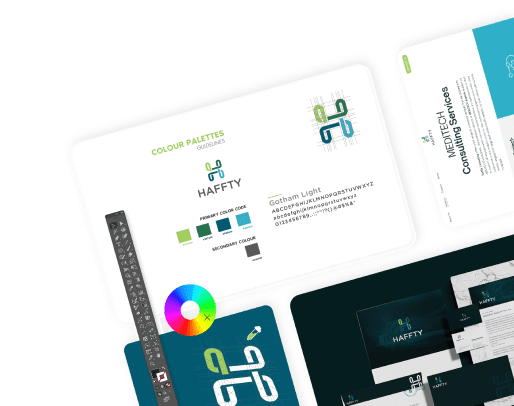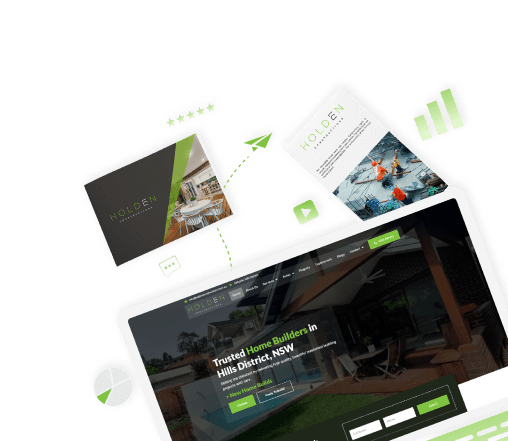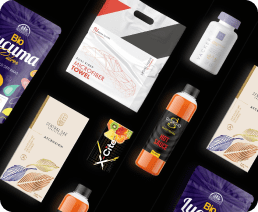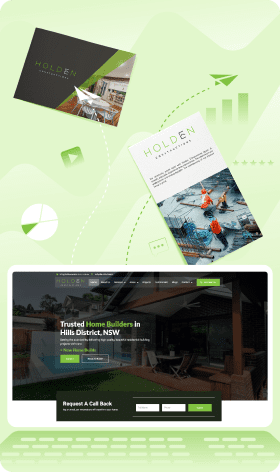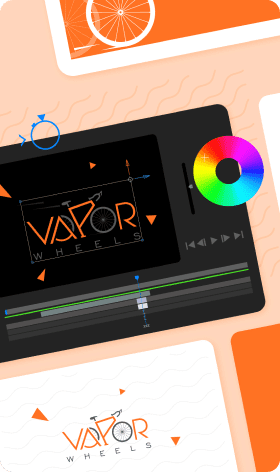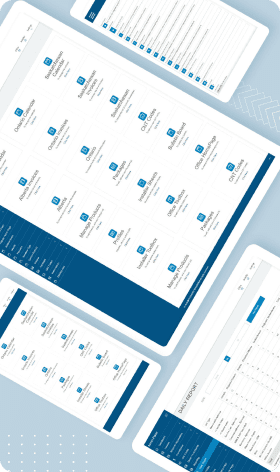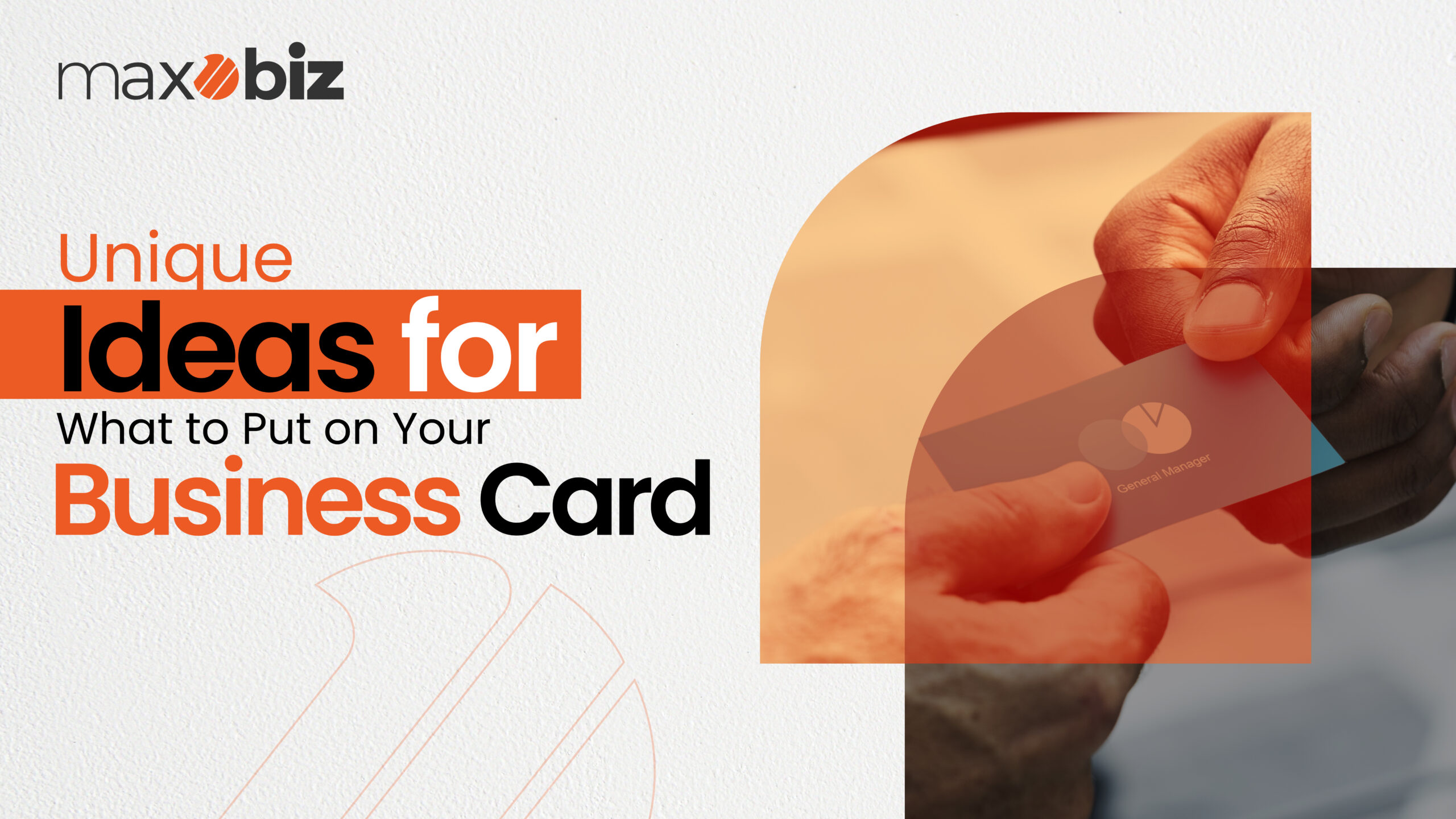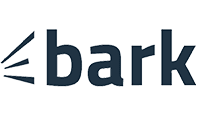Essential Info with a Twist
Freelance Management Insights
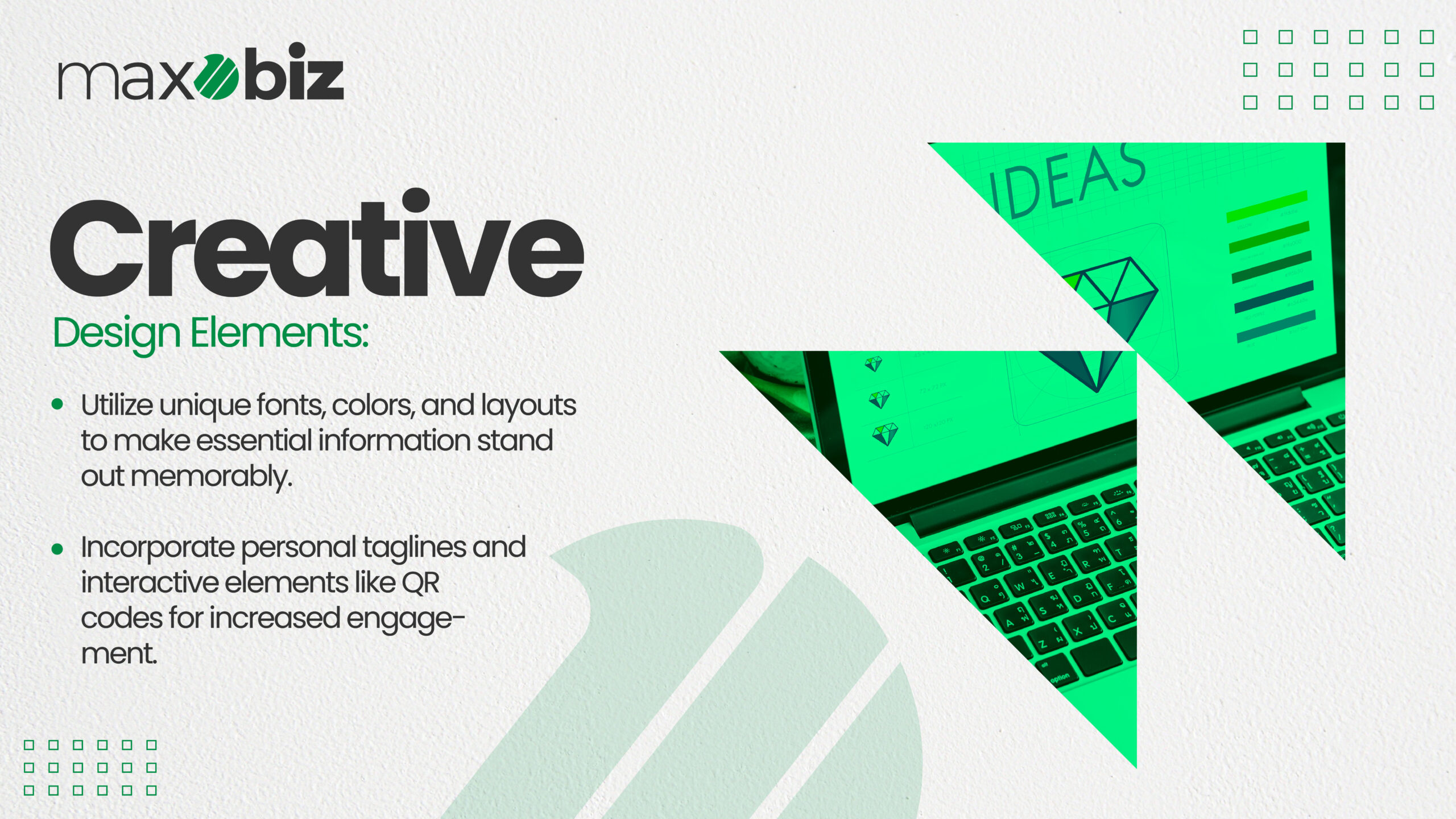
When designing a business card, the first thing that comes to mind that what information should be on a business card. The key is to include essential information creatively and memorably. For freelancers, especially those in management, this is an opportunity to stand out.
Creative Fonts and Colors: Use unique fonts or color schemes that align with your brand. This can make your name, title, and contact information pop out.
Innovative Layouts: Instead of the traditional horizontal layout, consider a vertical alignment or even a circular design. This can make your card more eye-catching.
Personal Tagline: Include a short, catchy phrase that encapsulates your work or approach to management. This acts like a hook, making your card memorable.
Interactive Elements: Think about adding elements that encourage interaction, like a QR code that links to your professional portfolio or LinkedIn profile.
Visually Represent Your Profession
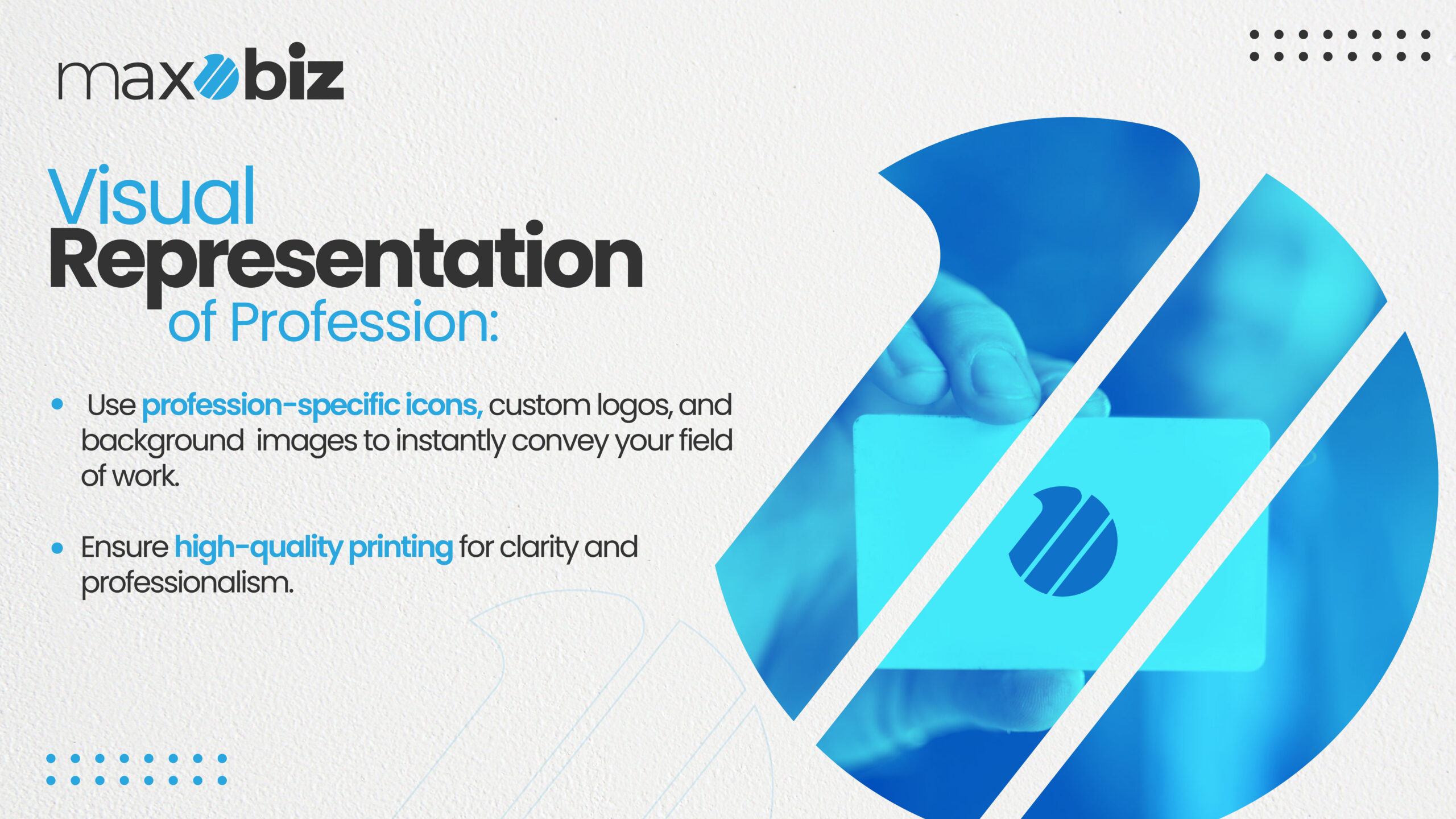
Iconic Images and Logos
A picture is worth a thousand words, and on a business card, it can convey your profession instantly.
Profession-Specific Icons: For instance, a graphic designer might include a pencil or paintbrush icon, while a photographer could use a camera symbol. These simple images immediately convey your field of work.
Custom Logo: Design a logo that represents your brand and profession. It should be distinct and recognizable, capturing the essence of your services.
Background Images: Use a subtle background image that relates to your profession. This shouldn’t overpower the text but should complement the overall design.
Quality Printing: Ensure that any visuals are printed in high quality to maintain professionalism and clarity.
Remember, a business card is not just a piece of paper with contact information; it’s a reflection of your brand and professional identity. Using these creative ideas, you can design a card that not only shares your details but also leaves a lasting impression.
Interactive QR Codes
Direct Links to Your Work
Interactive QR Codes on business cards are a modern and efficient way to connect with your audience. These scannable codes can instantly direct potential clients or partners to your online portfolio, website, or professional profiles. By embedding a QR code, you’re not just sharing your contact information; you’re providing a gateway to your digital presence.
How it works:
Simple Scan: People can simply use their smartphone cameras to scan the QR code.
Instant Access: Upon scanning, they’re immediately directed to a specific webpage – this could be your LinkedIn profile, online portfolio, or even a personal website showcasing your work.
Benefits:
Convenience: Easy for people to access your information without typing URLs.
Space-saving: Saves space on your card, allowing for a cleaner design.
Engagement: Encourages interactive engagement with your digital content.
Bold Color Choices
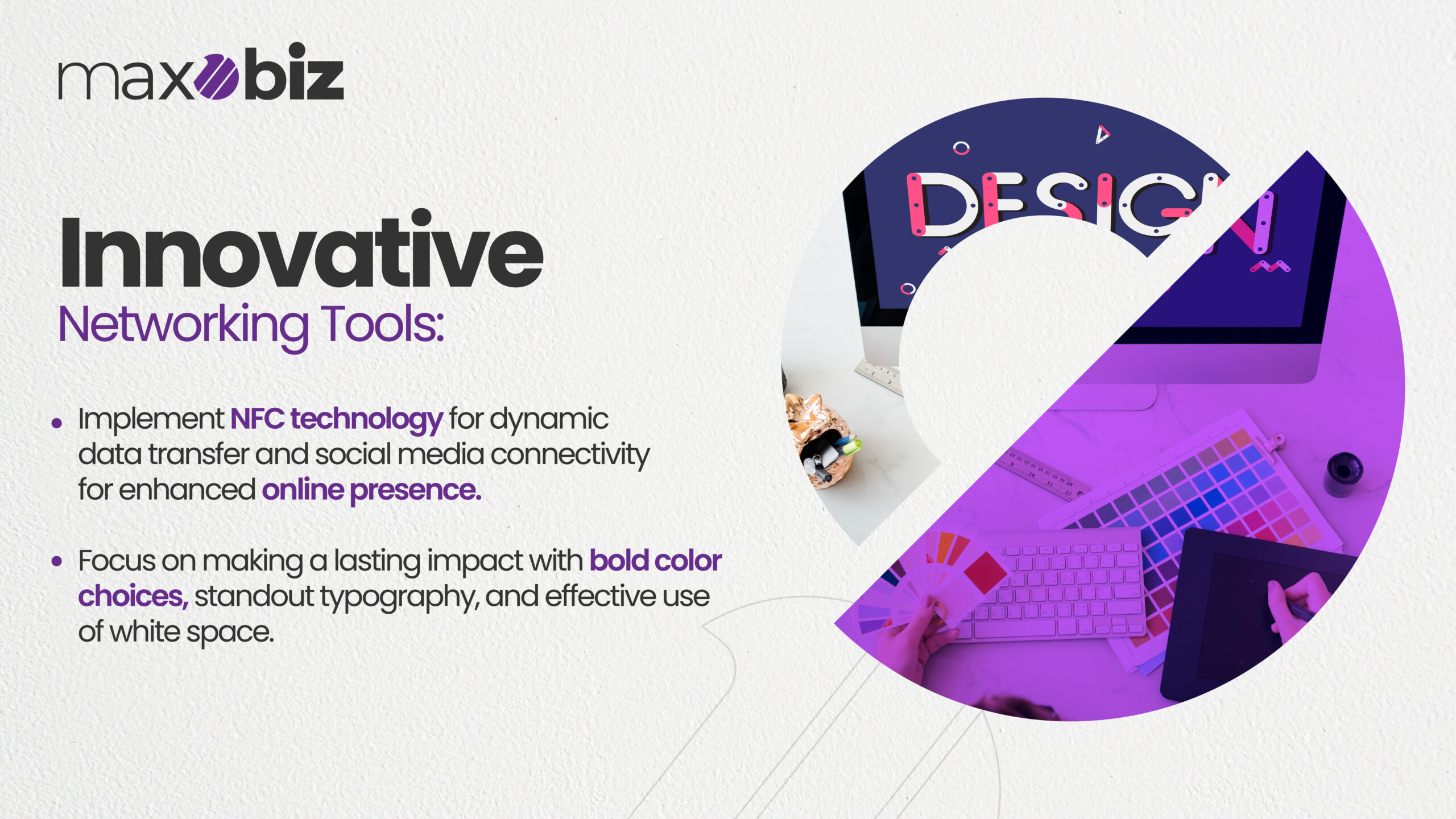
Selecting Impactful Palettes
Bold Color Choices in business card design can make a powerful statement and set you apart from the competition. The use of vibrant and striking colors can catch the eye, make your card memorable, and reflect your brand’s personality.
Tips for Choosing Colors:
Brand Alignment: Select colors that align with your brand identity and values.
Contrast: Use contrasting colors for readability and to make important details stand out.
Emotional Impact: Different colors evoke different emotions. For example, blue is often associated with trust and professionalism, while red is commonly linked to energy and passion.
Benefits:
Stand Out: Bright colors can make your card stand out in a stack of traditional cards.
Brand Recognition: Consistent use of specific colors can enhance brand recognition.
Personal Touch: Reflects your style or the ethos of your business.
These ideas combine practicality with creativity, ensuring that your business card is not just a piece of paper, but a memorable, interactive tool that effectively represents you and your brand.
Textural Appeal
Choosing the Right Card stock
When it comes to business cards, the feel of the business card is as important as its look. Textural appeal refers to the tactile experience someone has when they hold your business card. The choice of cardstock plays a crucial role here. You can choose from a variety of materials, like thick, premium paper, textured linen, or even unconventional materials like wood or metal. The key is to select a cardstock that feels pleasant and surprising to the touch, which can make your card memorable. It’s not just about thickness; the texture of the paper can add a unique character to your card.
Looking to enhance your business cards and make a lasting impact on potential clients or customers? Our exceptional business card design services can help you achieve just that. Our team of talented designers is dedicated to creating visually appealing and professional designs that perfectly represent your brand. With our expertise, you can take your business cards to the next level and leave a lasting impression. Experience the benefits of our amazing business card design services and elevate your brand presence today.
Standout Typography
Fonts That Speak Volumes
Typography is the art of arranging letters and text in a way that makes the written language not only readable but also visually appealing. On a business card, the font you choose can say a lot about your brand and personality. Opt for fonts that are not only legible but also reflect your business’s character. For instance, a sleek, modern font can convey innovation and sophistication, while a handwritten-style font might suggest creativity and approachability. The key is to use typography that stands out but also aligns with your brand’s image.
Also Read: Banners That Wow: Unleashing Creativity in Print Banner Design
The Elegance of Simplicity
Mastering White Space
Simplicity can be powerful, especially when it comes to design. In the context of business cards, mastering white space means effectively using the blank areas in your design. This doesn’t necessarily mean leaving spaces empty; rather, it’s about achieving a balanced, uncluttered look that draws attention to the most important details. White space helps in making your card look clean, professional, and easy to read. It can highlight your name, logo, or contact information, making them stand out more effectively. A minimalist design with ample white space can often make a stronger impression than a card overloaded with information and graphics.
Inviting Actions
Calls to Action and Offers
Engagement is Key: Your business card should not just provide contact information but also engage the recipient. A call to action (CTA) can be a powerful tool. This could be an invitation to visit your website, a prompt to schedule a consultation or a special offer code.
Special Offers and Discounts: Incorporate exclusive discounts or offers for the services or products you provide. This not only adds value to your card but also encourages potential clients to keep and use it.
Interactive Elements: Consider adding a QR code that leads to a special landing page on your website or a video about your services. This modern approach can make your card more interactive and memorable.
Showcasing Professionalism
Taglines and Titles
Professional Taglines: A tagline on your business card can succinctly communicate your expertise and the essence of your brand. This should be a short, catchy phrase that leaves a lasting impression.
Clear and Elegant Titles: Make sure your job title is clear and reflects your professional role accurately. This helps in establishing your authority and expertise in your field.
Quality and Design: The quality of the material and the design of the card reflect your professionalism. Choose high-quality paper and a design that aligns with your brand’s image and values.
Industry-Specific Design
Tailoring to Your Field
Custom Designs for Your Industry: Your business card should resonate with your specific industry. For example, a graphic designer might use bold colors and creative graphics, while a lawyer might opt for a more understated, elegant design.
Use of Industry Symbols: Incorporate symbols or imagery that are commonly associated with your field. This creates an instant connection and recognition of your professional area.
Functional Design Elements: If applicable, include elements that add functional value. For instance, a fitness trainer could incorporate a mini workout routine on the back of the card, or a baker could include a popular recipe.
Remember, your business card is more than just a piece of paper with your contact details. It’s a representation of your brand and a tool to make a lasting impression. By incorporating these unique ideas, your business card can effectively convey your professional identity and engage potential clients or partners in a meaningful way.
NFC and Digital Integration
The Future of Networking
What is an NFC business card? Near Field Communication (NFC) technology is revolutionizing the way we network. Imagine tapping your business card against a smartphone, and instantly, your contact details, website, and portfolio are transferred to that phone. This is what NFC enables. It’s a wireless technology that allows for the transfer of data over short distances. By embedding an NFC chip in your business card, you’re not just sharing your contact information; you’re creating a dynamic and interactive experience for your connections. It’s efficient, eco-friendly, and gives a modern touch to your networking.
Social Media Connectivity
Including Digital Addresses
Your online presence is as important as your physical one. Adding your social media design to your business card is a must. However, go beyond just listing your usernames. Use QR codes or creative icons that link directly to your profiles on LinkedIn, Twitter, Instagram, or other platforms. This makes it easier for people to find and follow you online, enhancing your network and online visibility. It’s not just about being found; it’s about creating a networking business card that extends beyond the physical meeting.
In today’s digital world, having a strong online presence is very important for any business. And with the popularity of social media platforms like Instagram, it’s essential to incorporate them into your marketing strategy. One effective way to do this is by adding the Instagram logo to your business cards. By doing so, you can not only showcase your social media presence but also encourage potential clients or customers to connect with you on this visually engaging platform.
The Conclusion: Making an Impact
Your business card is more than a piece of paper; it’s a representation of your brand and professionalism. By incorporating elements like NFC and social media connectivity, you transform it into a powerful networking tool. It’s not just about the information you provide but how you present it on business cards. Make sure your card reflects your brand’s identity and values. An impactful business card is memorable, innovative, and makes a lasting impression. It’s a small tool that can open up a world of opportunities.
Discover everything you need to know about business card designs. Our ultimate guide covers essential elements, from minimalist design techniques to the power of color psychology and impactful typography. Ready to create your mini-masterpiece?
In a world where everyone has a business card, the key is to stand out while remaining true to your professional identity.
FAQs
How can a business card be made unique?
A business card can be made unique by incorporating creative design elements, such as unique shapes or materials, eye-catching visuals, or a memorable tagline.
What information is recommended to include on a business card?
Recommended information to include on a business card includes your name or business name, contact information such as phone number, email, and website, and any relevant social media handles or accounts.
What are some ways to add flair to a business card?
To add flair to a business card, consider using unconventional materials, incorporating a pop of color, utilizing special finishes like embossing or foil stamping, or adding interactive elements like QR codes.
What name is appropriate to put on a business card?
The name that is appropriate to put on a business card depends on your preference and the context of your business. It can include your name, the company name, or a combination of both. Choose a name that reflects your brand and how you want to be recognized professionally.






